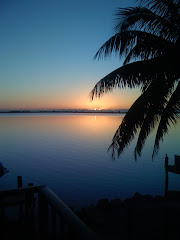KEYS TOURISM ADVISORY 9 May 13, 2010 • 1:15 PM EDT
News and Information From the Monroe County Tourist Development Council
Revised Q&A Regarding the Florida Keys and the Gulf Oil Spill
In light of new information regarding the Transocean/BP (British Petroleum) oil spill and its relationship to the Florida Keys, the Monroe County Tourist Development Council has updated the Question and Answer document originally transmitted May 4. This should be helpful in the event your staff must field questions from current or potential visitors. It is also published on the Florida Keys website in a special oil spill-related section. Since May 3, that section has received close to 20,000 views, so it is obvious travel consumers are seeking information related to the issue.
I heard that the Keys are in imminent danger of being affected by the oil spill.
The Keys currently are not being threatened by the oil spill and currently the spill is 475 miles away from the Keys. The oil from the spill is positioned in the northern Gulf of Mexico, away from the Loop Current, according to National Oceanic and Atmospheric Administration (NOAA) trajectory analysis. If oil got into the Loop Current, it would require 10 to 14 days for it to migrate into the Keys region. Even then, it is unclear whether the oil would actually impact Keys regions or bypass the area and remain either in the Loop Current or the Gulf Stream (see explanation of Loop Current below).
What is the Loop Current?
The Gulf Loop Current is a clockwise current that carries water from the Yucatan Channel north into the Gulf of Mexico, then back down south off the Florida west coast, past the Dry Tortugas and into the Gulf Stream. In this incident the current plays a crucial role because of concerns that if oil gets into the Loop Current, it could be swept to the south, possibly into or around the Keys and possibly carried by the Gulf Stream to other areas of Florida and the U.S. East Coast.
How can oil get into the Loop Current?
It’s based primarily on wind direction in the northern Gulf of Mexico. A strong wind from the north could push oil toward the Loop Current. Winds from the southern half of the compass help to keep oil away from the Loop Current.
I understand that if oil gets into the Loop Current it will definitely hit the Keys and the impacts will be devastating.
NOAA is still studying potential impacts, but more information is coming to light that the kind of impacts the Keys might experience would likely be different than what is transpiring in the northern Gulf of Mexico. Most oil spill experts say any oil carried by the Loop Current would be more dispersed and “weathered” by the time it gets to the Keys, which is some 475 miles from the spill site. That means it would be highly unlikely that large “rivers” of oil would impact the Keys. More likely, experts said, the impacts would be in the form of tar balls. While arrival of oil in any form is unacceptable, it seems those impacts would be less harmful to the environment and likely easier to mitigate. It is also possible that one area of the Keys could be affected and others not, or that oil could remain in the Loop Current and Gulf Stream and completely miss the Keys.
Can you guarantee me the oil will not make its way into the Keys during my vacation?
Nobody can make a long-term guarantee that residue from the Gulf Coast oil spill will or will not
be in the Keys. But what is known is that NOAA forecasts oil slick trajectory movements within a 72- hour timeframe. As long as the oil is north of the Loop Current, it is not likely to affect the Keys. If it does get into the Loop Current, new studies now show it will take about 10 to 14 days for any oil impacts to migrate down to the Dry Tortugas region (situated about 70 miles west of Key West) before possibly exiting into the Gulf Stream. When making reservations for accommodations and water-related activities, it may be prudent to discuss in advance any cancellation and refund policies in the event oil residues impact the immediate area of activity.
I hear authorities have shut down fishing in the Keys.
That is not true. Earlier, NOAA issued an order restricting fishing in federal waters affected by the oil spill. That area is from Louisiana state waters at the mouth of the Mississippi River to waters off Florida’s Pensacola Bay. No other areas of Florida, including the Keys, are under the order at this time. It also means that Keys-caught seafood has not been affected and is safe to consume.
Is it safe to dive, swim and participate in other water sports in the Keys?
There are no advisories in the Keys currently in effect due to the Gulf oil spill. The Monroe County Health Department is monitoring the situation and would issue an advisory in the event of any healthrelated risk.
I’m apprehensive about traveling to the Keys because I don’t want to lose money if oil comes and ruins my vacation.
Each property has its own cancellation policy. It is prudent to check with the hotel as well as any other travel-related operator in advance to determine cancellation policies and if management will offer refunds or credits in the event oil adversely affects Keys waters.
I hear much of Florida is under a state of emergency.
Nineteen of the state’s 67 counties are under a state of emergency, even though no impacts have been seen in Florida as of Thursday, May 13. The Keys are in Monroe County and a state of emergency has not been declared for Monroe. Many times a state of emergency is designated as a standard
prerequisite to qualify an area for emergency federal funds, before a disaster actually impacts the region.
What happens if oil does affect the Keys?
The U.S. Coast Guard is the lead government agency responsible for oversight of any necessary
cleanup and remediation activities. The Coast Guard works in conjunction with other local, state and federal authorities to enact a 725-page area contingency plan that includes oil spill response actions. Some of the other agencies include NOAA’s Florida Keys National Marine Sanctuary, Florida’s Department of Environmental Protection, Monroe County Emergency Management and other public agencies, as well as area individuals and organizations. All efforts possible would be made to protect the marine environment in the Keys. The agencies have a unified plan in place to address oil spills caused by vessel groundings and have conducted several drills to prepare for such an incident. Since the BP spill began, agencies have met several times to adapt the plan for this unique incident. BP must pay for all response activities.
When will this be over?
Officials don’t know for sure. The outcome and timing depend on when the actual leaks at the well site can be plugged or effectively contained and how effective current mitigation efforts are work in containing the oil already in the northern Gulf of Mexico.
Where can I get more information on the oil spill?
The Keys tourism council is posting information — including official NOAA oil slick trajectory maps — on its website at www.fla-keys.com as well as on Twitter and Facebook.
http://twitter.com/thefloridakeys • http://www.facebook.com/floridakeysandkeywest
Spill-related websites, primarily focusing on affected areas, include:
http://www.deepwaterhorizonresponse.com • http://www.noaa.gov
Subscribe to:
Post Comments (Atom)



.jpg)
No comments:
Post a Comment